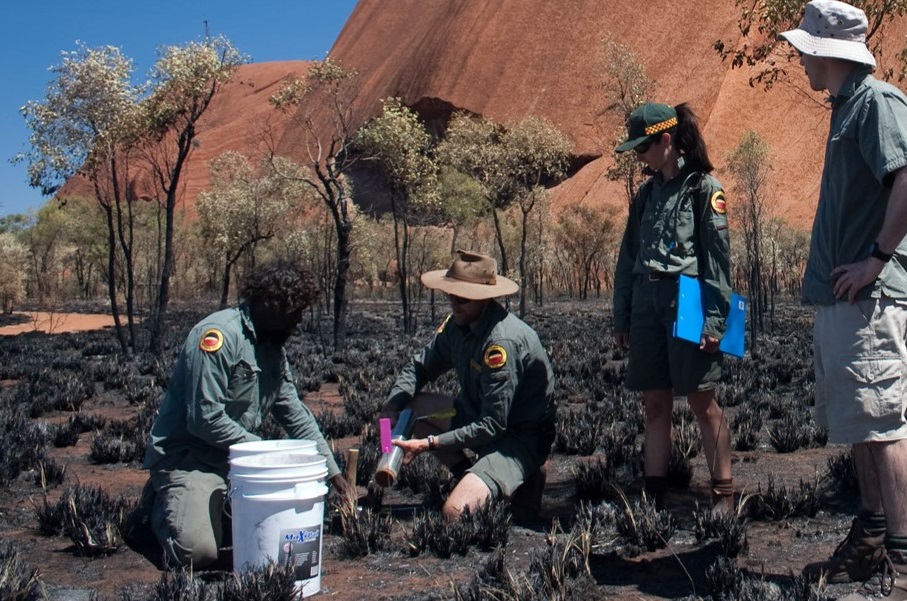Soil microbes underpin a healthy planet. We've used next-gen DNA sequencing to map Australia's soil microbiome. Our map is being used for forensics, agriculture, conservation and more.

Sampling soil at Uluṟu with national park staff.
Beneath our feet is a universe of microbes. The number of bacteria in Earth’s soils rivals the number of stars in the observable universe, and that’s not counting other microbes like fungi.
Soil microbes are vital for ecosystem health. They support soil fertility, agriculture, species diversity and resilience of our natural ecosystems.
You could even say that soil microbes run the planet. They take care of ecological processes like nutrient and carbon cycling and water purification. They help plants take in nitrogen from the soil. Like our own friendly gut bacteria they suppress plant diseases present in the soil.
How do we know what’s living in our soils? Until very recently, we didn’t. Counting microbes in the field, in the traditional way of surveying or collecting biodiversity, is obviously impossible. And while soil microbes are happy in the soil, try culturing them in the lab and you’ll find that most of them die while a few grow out of all proportion.
So over the last five years, we’ve run a project known as BASE – Biomes of Australian Soil Environments. Working with custodians and land owners, we sampled soils from more than 1500 sites across Australia, spanning deserts, agricultural lands, the tropics, alpine regions, coastal areas and beyond.
We then used next-generation DNA sequencing to identify the microbes present, handling more than 90 billion DNA sequences in the process. To make the resulting terabyte-scale data usable by real people, we built a map of Australia’s soil microbiome.

Map of soil sampling sites around Australia.
Our map is a world first, a globally unique resource for environmental research and management. It’s being used in many different ways: mineral exploration, land management, agriculture and even forensics.
One of BASE’s most interesting uses is in restoring landscapes. It turns out that areas with similar ecosystems have similar soil microbes, even if they are vast distances apart. You may have heard of a faecal transplant, where the gut microbiota of a healthy donor are transferred to a patient suffering an untreatable gut infection. The same can be done for soil, transplanting a little soil from a healthy ecosystem to help restore one that has been altered by farming, mining or other land uses, paving the way for successful plantings of local trees and other plants.
BASE continues to grow, with new contributors providing soil samples from across the continent. And the marine science community is adding data about our marine microbes to produce a national combined land and sea microbiome dataset for Australia.
The BASE dataset was published in the international data journal GigaScience and we are working on making it openly accessible on the Atlas of Living Australia, where it can be combined with other environmental data, such as climate data, geochemical information and vegetation type.
BASE has more than 25 research partners and is led by us in partnership with Bioplatforms Australia, Agriculture Victoria and the University of Adelaide.
You can find out more about our work with soil and see the dataset for yourself here.


24th November 2022 at 8:53 pm
the information you provide is very useful for others, thank you for making it.
2nd August 2022 at 8:44 pm
Thankyou for this informative post
30th August 2021 at 5:58 pm
Contain every required topic with perfect explanation and I will share this with my all friends.
24th July 2021 at 7:29 pm
ISO 27001 appears to not give adequate data about the assets needed to execute, work, keep up with, and further develop an Information Security Management System, however this is just an impression.
ISO 27001 Services in Philippines
23rd June 2021 at 6:11 am
Perfect work, guys!